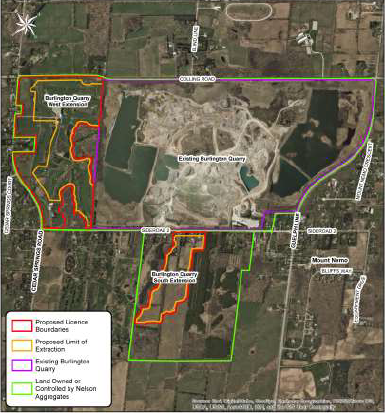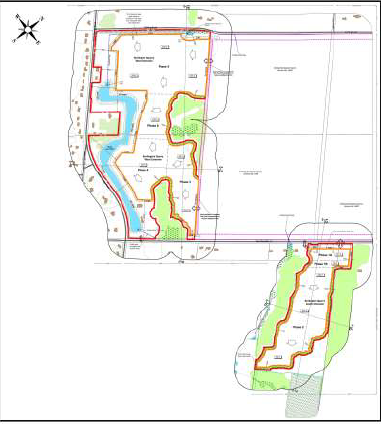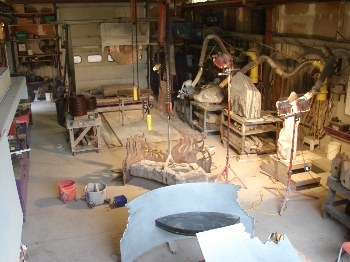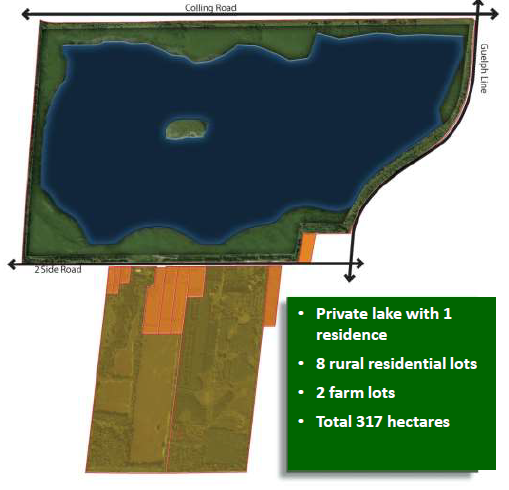
 By Pepper Parr
By Pepper Parr
May 22nd, 2020
BURLINGTON, ON
Brian Zeman packed five cartons of documents into his car last Thursday, put cheques totaling $350,000 into his brief case and headed south from his Barrie office.
He was filing an Application for an extension of the quarry license held by Nelson Aggregates on Colling Road west of Guelph Line.

He isn’t exactly pretty but nevertheless plays an important role in the local environment. Comes in different colours as well.
That quarry was the object of a lengthy re-licensing application in 2012 – the application was turned down because the land they wanted to mine was the habitat for the Jefferson Salamander.
Zeman is a planner who provides urban and regional planning analysis and research for MHBC clients that are involved in the aggregate resource sector. He has considerable experience in aggregate site planning and licensing and processes relating to aggregate applications. He is a qualified and experienced aggregate Compliance Assessment Report inspector.
Having worked on this file for more than a decade Zeman knows it inside and out and can spit out statistics better than anyone I’ve heard before.
He will tell you that the application meets all the rules and regulations; that the Region has defined the area for aggregate extraction; that the City of Burlington’s Official Plan sees the area as compatible for aggregate extraction. The city will be asked to Amend the Official Plan from Escarpment Rural Area to Mineral Resource Extraction Area.
 Nelson Aggregate believes they are onside with the Niagara Escarpment Commission and Conservation Halton. There is a very good argument for the Conservation Authority running the parks when they are eventually – they have solid experience with seven parks that they operate.
Nelson Aggregate believes they are onside with the Niagara Escarpment Commission and Conservation Halton. There is a very good argument for the Conservation Authority running the parks when they are eventually – they have solid experience with seven parks that they operate.
Each of those agencies received copies of the application, along with the appropriate fee and will now look for consultants to review the documents and return with an opinion. The consultants that will be hired will also be paid for by Zeman’s client – Nelson Aggregates, to review the documents.
There are different views on any extension to the expansion. Under the current license the quarry can quarry where they are for the next 50 years and then sell the land to anyone who wants to buy. Zeeman points out that once the quarry has been filled with water the site would become very attractive to anyone who wanted privacy on a small island surrounded by a large lake that is private,
The current license is for a 218 hectare area from which they can extract from 210 hectares.
The demand for aggregate is solid and is expected to be so for some time. Zeman has all kinds of numbers on what has been built with aggregate from the existing quarry as well as a very strong argument for using local aggregate for local area projects: 60% of the cost of a truck load of aggregate is the cost of getting it from the quarry to the construction site.
He is quick to point out as well that the Nelson quarry contains the highest quality aggregate resource in southern Ontario.
How has aggregate from the quarry been used in Burlington?
71,375 private dwellings
47,217 driveway
734 km of city roads
34 public schools
7 community centres
The Joseph Brant Hospital and City Hall.
The province has a “close to market” policy on where aggregate is extracted. The Nelson site has served the Halton, Hamilton and Peel markets for some time.
The Nelson quarry site is identified in the Niagara Escarpment Plan, the Regional and City Official Plan as locations that can be considered for expansion of the quarry.
The licence application is to expand the area by 78.3 hectares and allow for aggregate extraction in 50.2 hectares from which they will extract +/- 30 million tonnes. The application makes the assumption that 1 million tonnes will be extracted each year

These are the new extraction areas. A former golf club (still operating) on the left and farm land on the right.
When there is quarry work being done – there are water concerns. The Nelson site is no different. The site has been operational since 1953 during which time there have been no adverse impacts to existing residential and agriculture wells. There have been studies including hydrogeology, karst, surface water modelling. The predicted effects on ground water levels are consistent with existing quarry, and significant available groundwater resources remain through the development and closure phases.
Nelson has, on several occasion re-drilled a well for an area resident or farm operation.
Air pollution and noise – they are also part of extraction work.
There have been complaints yet the reports from the consultants, who are all certified, maintain that “with respect to health impacts (for air quality) the study determined that no significant health impacts are expected.”
Quarries are seen as noisy operations. The dynamite blasting is tightly controlled – they can blast once a week and only at a prescribed time. In the past there have been complaints about blasting when there was no blasting taking place. The blasting that does take place is carried out by professional engineers who design the blast and monitor what takes place. Nelson doesn’t get anywhere near that blasting. Sirens are sounded and the blasting takes place on a specific day (Add to this) and at a specific time that is broadcast to the community. An email is sent out.
A quarry is a big hole in the ground that does impact the natural heritage. The proposed southern extension does not contain any key natural heritage features.
The proposed west extension is predominantly an active golf course with a single butternut tree; three golf course maintenance building.
Traffic patterns will not change as a result of either extension. The proposed extension includes a maximum limit of 2 million tonnes each year. Nelson expects to ship 1 million tonnes each year. Shipping will continue from the existing exit-entrance on #2 Side Road east to Guelph Line.

The Walt Rickli studio, that produce sculptures that have been sold world wide were once done on the site
While there isn’t all that much in the way of cultural heritage resources in the area; the biggest cultural resource was the Walt Rickli sculpture operation that once rented space from the quarry. He had to find a new home when Nelson wanted to aggregate underneath his big shop. Rickli is quick to say that Nelson was very fair and gave him all the time he needed to move his equipment.
There are no significant built heritage; there are no significant archeological resources nor are there any significant heritage landscapes.
The application points out that the site is private property and could continue to operate as a quarry for another 50 years. It would operate at reduced production and would primarily supply the onsite asphalt plant.
They believe there is potential for future underground mining that could further extend the life of the quarry.
 The quarry is prepared to consider selling the land with the following:
The quarry is prepared to consider selling the land with the following:
Private lake with 1 residence
8 rural residential lots
2 farm lots
Taking up 317 hectares
The Nelson quarry application takes a much bigger view – they believe there is an opportunity to create a magnificent park – two of them actually.
One on the north side of #2 Side Road where there would be the Jefferson Salamander habitat and then a small lake.
On the north side of the road there would be a huge park with every amenity you would want to see in a park.
Nelson describes it as a unique opportunity to significantly enhance public open space.

 Nelson quarry would deed the land to either the Region or the city who would be expected to develop the park.
Nelson quarry would deed the land to either the Region or the city who would be expected to develop the park.
Yes – that park would be built sometime in the future’
However – some of the land would be turned over quickly
To date there hasn’t been much in the way of comment or reaction from either the ward councillor or the Mayor.
Rory Nisan, the ward Councillor at one point said he was not going to meet with the Nelson Aggregate people because he didn’t want to have anyone influence his thinking.
Mayor Meed Ward has said she has no interest in the idea until the rehabilitation of the site has been completed. Most recently she said she is waiting until the application is complete. To be politically realistic there isn’t all that much in the way of political Brownie points for the politicians.
The residents of the community have no time for the quarry they have; they were delighted when they won the last battle for an expansion application. They see the rural community as something that is there home and they don’t want any change. Nimbyism defined.
Burlington’s population is growing – people will want to get out into the country where they can do something. The locals would just as soon keep that country side to themselves.
Long term thinkers would have cozied up to this opportunity and begun now crafting how the opportunity could be maximized.



















